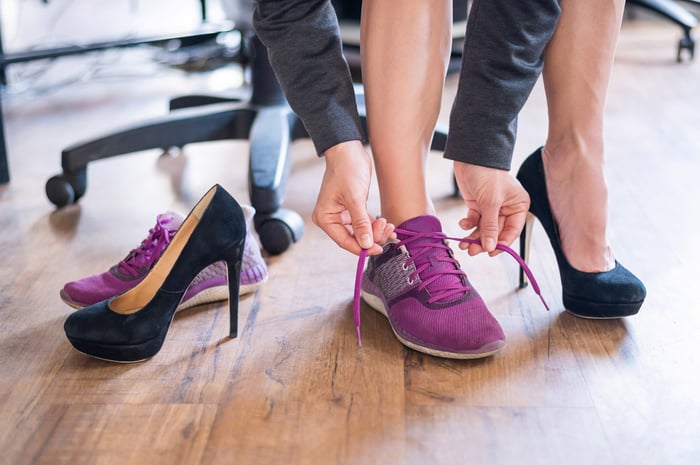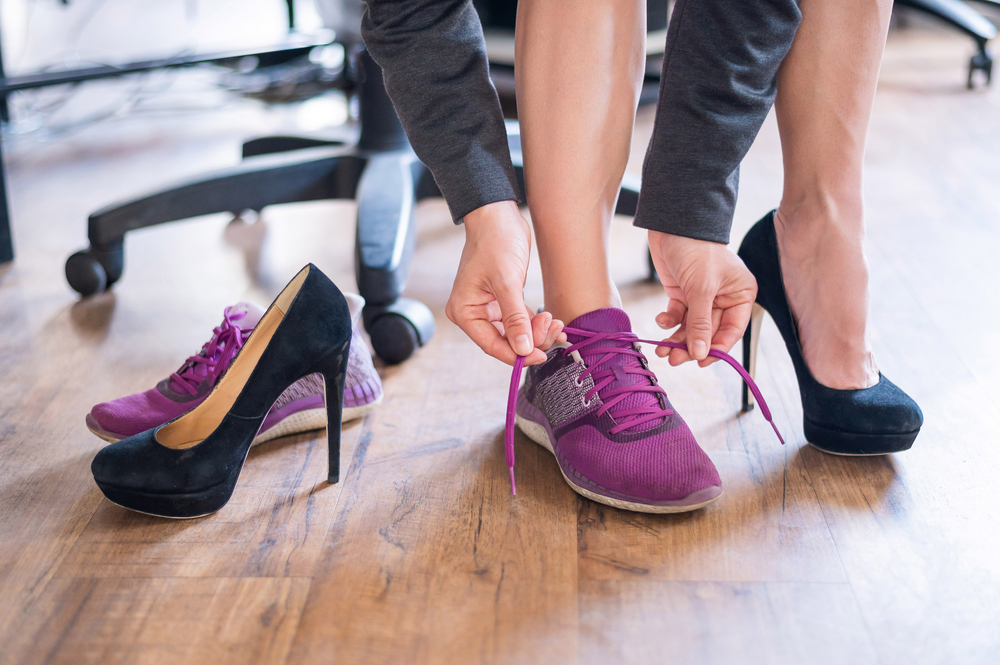Can Your Choice of Shoes Cause Leg Problems?

We all have our favorite shoes - some we like because they look good, others because they feel good. Sometimes shoes that we choose for fashion are also comfortable to wear, and when that happens, it's like shoe nirvana. Other times, the leg pain, aching, and swelling that comes from fancy shoes is simply the price we pay to look good. However, the price we pay for fashion could be higher than we think.
Why do your legs hurt when you wear high heels? Is it the shoes...or is something else going on health-wise beneath the surface? From my perspective as a vein specialist, it's definitely a medical clue telling me that your vein circulation is not normal.
Can certain shoes make your vein condition worse?
The short answer is...yes, it can. Not only can high heels and stilettos cause painful bunyons and calluses to appear on your toes and heels, but they can also affect your circulation. Simply put, your shoes don't actually cause a vein condition or varicose veins, but they can make them worse. In the video below, I go into more detail regarding this common question and concern:
When it comes to shoes, the higher the heel, the harder that shoe is on your vein circulation. The circulation in the leg depends on the muscles contracting with each step you take (the calf muscle pump). When the heel is continually elevated, the calf muscle doesn't contract. When the calf muscle is unable to contract like normal, the blood pools in your leg - which is abnormal. If you are one who suffers from vein reflux where blood already pools in the leg, the condition can worsen because your muscles are further restricted from doing the work of helping recirculate the blood. The end result is a worsening of the symptoms of a vein condition: swelling, aching, and fatigue. Because of this, visible veins in the leg, such as varicose veins, can then begin to develop or, if they are already present, can worsen.
Steps to Take to Improve Your Vein Health
Along with foot pain and swelling, if you notice any of the visible signs of a vein condition or have experienced any of the invisible signs...it's time to take action. If you do, in fact, have a vein condition, know that whatever painful symptoms you are experiencing or the presence of unsightly veins will worsen over time - and wearing low-heeled shoes will help your legs feel better. (Wearing compression stockings will also help. There are a lot of fashionable options available online. See our blog on selecting the right size and strength.) For people whose symptoms persist or progress (as most do) they will ultimately need a vein treatment to relieve their symptoms.
A specialized vein ultrasound will tell you for sure if you have a vein condition. The first step is to avoid, if possible, wearing high-heeled shoes. The next step is to simply schedule a free vein screening and start by talking to our team about your symptoms. They know what questions to ask and what symptom patterns to watch for, and can help you move forward in finding a solution as well as help you navigate your insurance coverage for any treatment.



